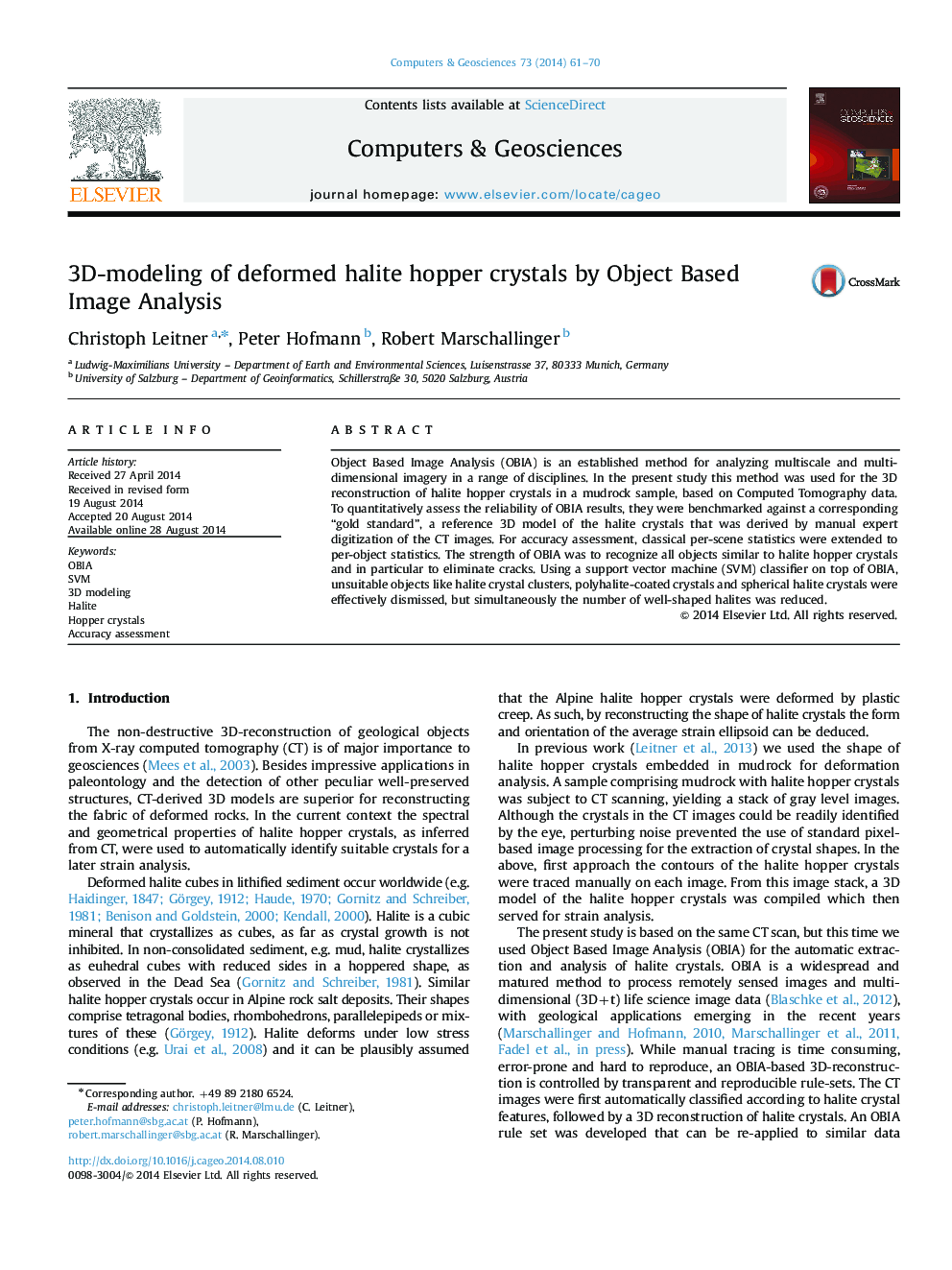| Article ID | Journal | Published Year | Pages | File Type |
|---|---|---|---|---|
| 6922668 | Computers & Geosciences | 2014 | 10 Pages |
Abstract
Object Based Image Analysis (OBIA) is an established method for analyzing multiscale and multidimensional imagery in a range of disciplines. In the present study this method was used for the 3D reconstruction of halite hopper crystals in a mudrock sample, based on Computed Tomography data. To quantitatively assess the reliability of OBIA results, they were benchmarked against a corresponding “gold standard”, a reference 3D model of the halite crystals that was derived by manual expert digitization of the CT images. For accuracy assessment, classical per-scene statistics were extended to per-object statistics. The strength of OBIA was to recognize all objects similar to halite hopper crystals and in particular to eliminate cracks. Using a support vector machine (SVM) classifier on top of OBIA, unsuitable objects like halite crystal clusters, polyhalite-coated crystals and spherical halite crystals were effectively dismissed, but simultaneously the number of well-shaped halites was reduced.
Related Topics
Physical Sciences and Engineering
Computer Science
Computer Science Applications
Authors
Christoph Leitner, Peter Hofmann, Robert Marschallinger,
